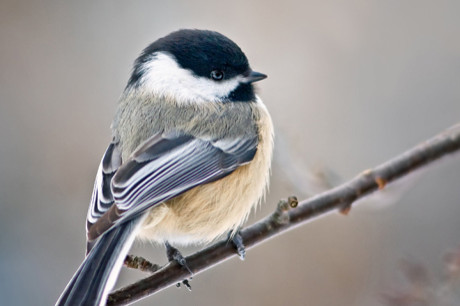Songbirds' Tunes Changing Due To Exposure To Chemical Pollutants, Says Study

Cornell University Researchers have found that low levels of contaminants may have a peculiar effect on birds in certain environments.
Published in the September issue of the science journal PLOS ONE, the study says that the songs of birds can be slightly altered by low amounts of PCB (polychlorinated biphenyls). These chemicals -- which were banned in the U.S. in 1979 -- were used to fabricate electrical devices due to their ability to withstand extreme temperatures, the Cornell Chronicle reports. The pollutants have extreme toxic- and developmental-related effects on both humans and animals.
The seven-year study focused on songbirds that nest along a stretch of the Hudson River Valley. This region contains "legacy levels" of PCBs as a result of numerous years of electronics being created upriver from the area. And the birds -- the black-capped chickadees and song sparrows -- are exposed to PCBs when they eat contaminated insects.
The blood of male birds exposed to PCBs was collected and tested. Then using sound analysis software created at the Cornell Lab of ornithology, the team was able to identify variations in the chickadee's "fee-bee" song as well as a higher quality in the trills of the song sparrow.
“PCBs are changing behavior in subtle but important ways that we’re only beginning to recognize,” said lead author of the study Dr. Sara DeLeon -- a postdoctoral researcher at Drexel University. “The black-capped chickadees and song sparrows we studied ingest PCBs when they eat contaminated insects. The chemicals appear to mimic hormones and interfere with development in the part of the bird’s brain that governs song and song structure.”
The songs of the birds from the Hudson River Valley were compared to those of birds in an uncontaminated area of the Adirondacks, Science Daily reports. According to DeLeon, there is usually little difference between the songs of the species. The team also found that the disruptions in the songs are connected to specific PCB types. In total, DeLeon tested 41 of the 209 PCB variations in order to pinpoint their effects.
Senior author André Dhondt said the study offered a more detailed picture of the effects of PCBs on the bird species by looking at the exacts types rather just measuring overall exposure levels. He believes the next step in will involve incorporating the same method to study how PCBs are spread through the ecosystem and the effects.
Watch a video on the study below:
© Copyright IBTimes 2024. All rights reserved.
Request a Correction
Join the Discussion





















